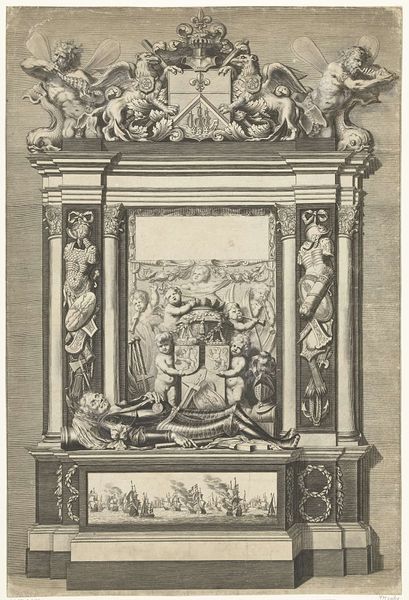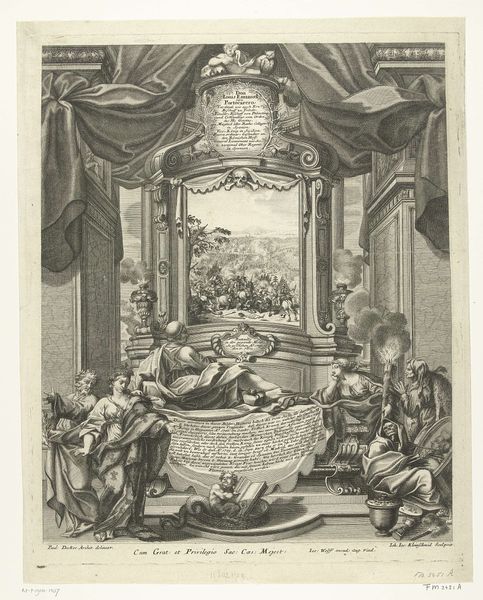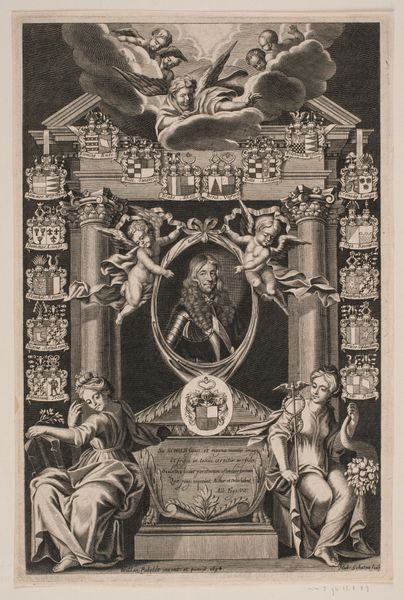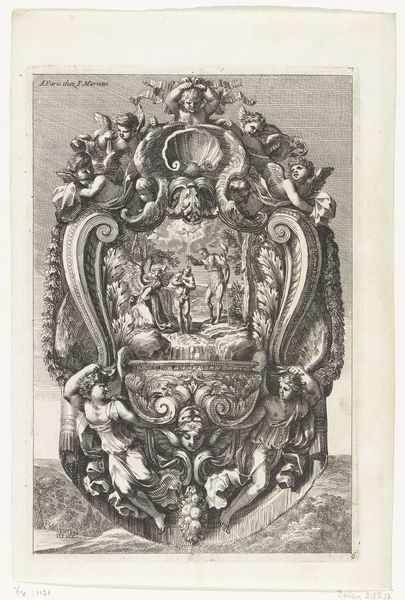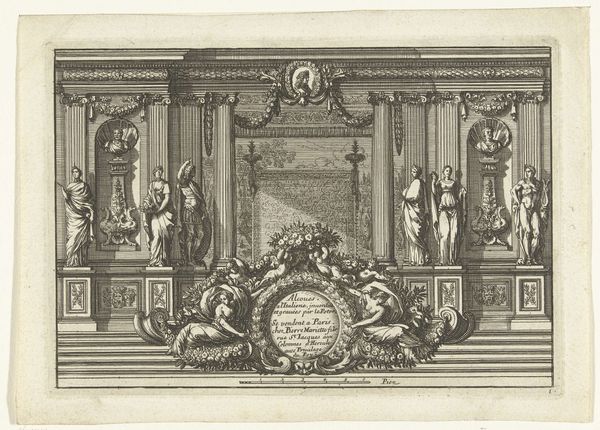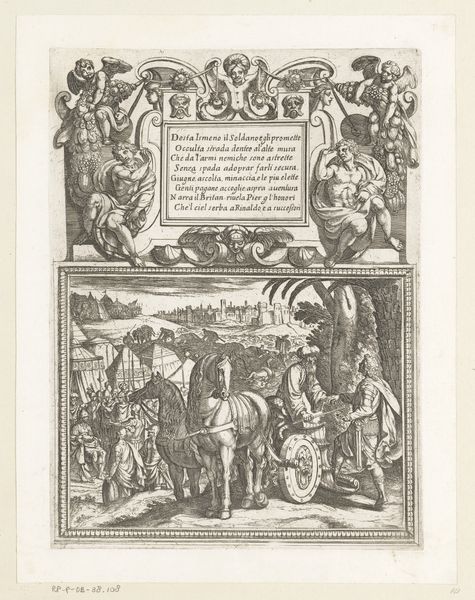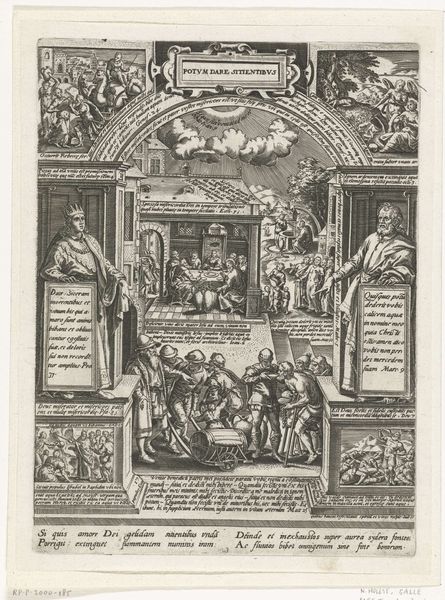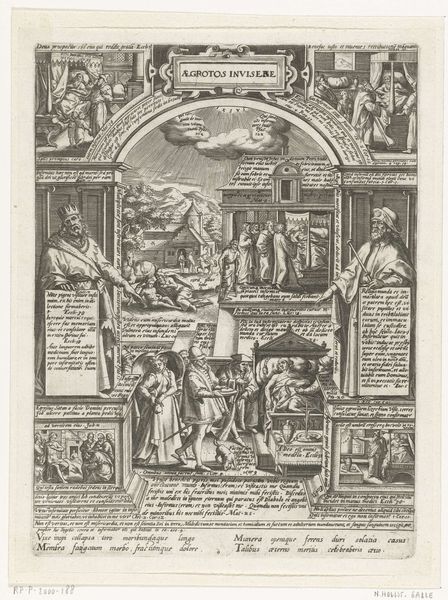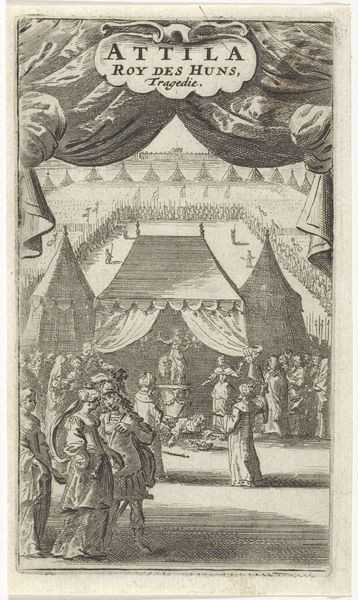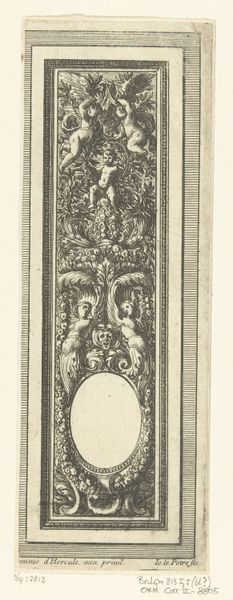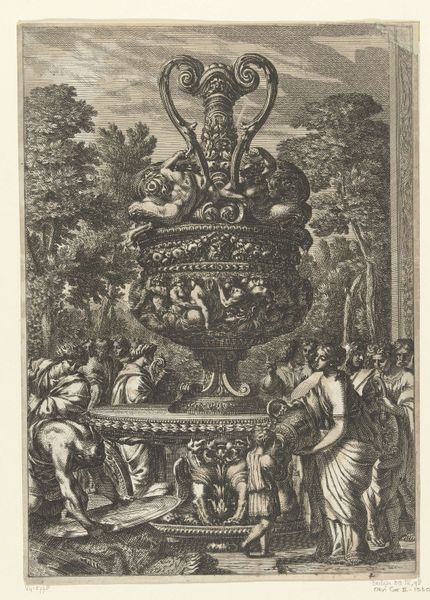
print, engraving
#
portrait
#
allegory
#
baroque
# print
#
history-painting
#
engraving
Dimensions: height 695 mm, width 470 mm
Copyright: Rijks Museum: Open Domain
Curator: Oh, this engraving feels so dense! So many overlapping figures, it’s hard to know where to focus first. Editor: Well, let's try to unpack it a bit. What you’re looking at is Romeyn de Hooghe’s “Allegory on the victories of William III in 1675," created the year following, now residing here at the Rijksmuseum. It's really a document of its time. Curator: Right, an official account, and incredibly layered. The portraits set in medallions... I notice William III is in the center, looking quite self-assured amidst the chaos. What do those medallions signify? Editor: The portraits surrounding William would certainly point to lineage and alliance; they serve as almost totemic symbols of power and legitimacy. The strategic marriages, political maneuvers, and battles... it all contributed to his ascent. The imagery speaks to the divine right of kings. Curator: Interesting. And then below we have the battle scenes themselves, teeming with action and brutality. All framed by these classical figures and symbols, what's their significance in the narrative? Editor: Well, look at the lion and the eagle: potent symbols associated with strength, courage, and vision. The cornucopia below suggests prosperity flowing from William's victories. I'd argue those elements aim to elevate a military campaign to almost mythological significance, embedding it into a cultural narrative of triumph. Curator: So it's less about historical accuracy and more about shaping public perception. Do you think such elaborate symbolism effectively conveyed its message? Wouldn't this intense density have created more ambiguity? Editor: Ambiguity could be strategic in works such as these. I find the symbolism of constant tension here quite remarkable because viewers could draw multiple meanings and interpretations that suit their individual experiences or perspectives. As well, it offered enduring significance long after the specifics were forgotten. I still feel echoes today. Curator: I see your point. It is far from a transparent illustration. It does force us to ask questions, prompting an examination of power, history, and its lasting symbolism. Editor: Precisely. De Hooghe's engraving prompts me to wonder about our modern interpretations of power—how societies still visually frame heroism, nationhood and collective triumphs.
Comments
No comments
Be the first to comment and join the conversation on the ultimate creative platform.
